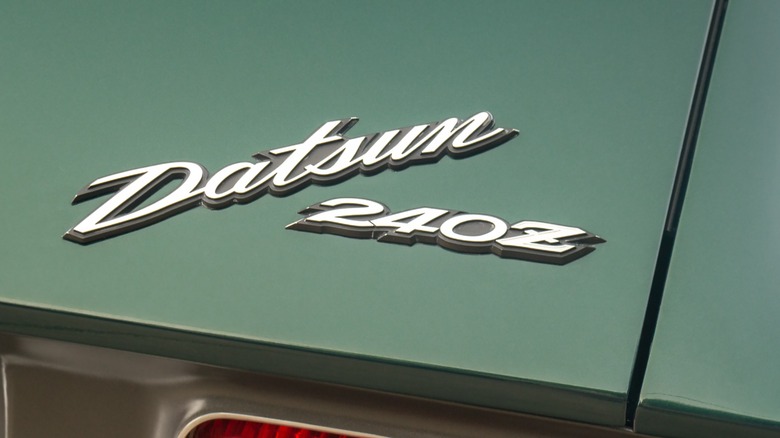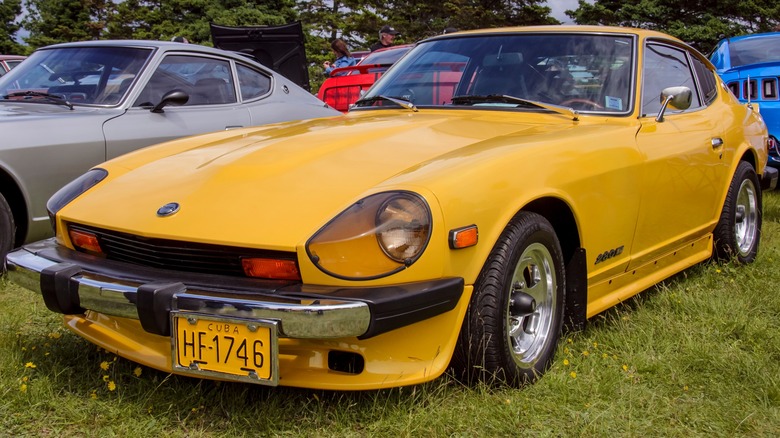Datsun 240Z Vs 260Z Vs 280Z: What's The Difference?
When most people think of iconic Japanese sports cars, things like the Nissan Skyline GT-R, Mazda RX-7, and AE86 Toyota Corollas. However, if you step back a little further in history, the S30 chassis Datsun Z cars took the world by storm as an affordable, entry-level sports car that could throw punches with the priciest of sports cars.
The S30 chassis Datsun Z car includes the 240Z, 260Z, and 280Z. Known overseas as the Fairlady Z, this car is the birthplace of the lineup of Z cars that continues production to this day with the 2024 Nissan Z sports car.
If you're familiar with the naming scheme of Z cars in the U.S., you're likely to know that the number preceding the letter is in reference to the displacement of the engine. That being said, there are a handful of additional differences between the 240Z, 260Z, and 280Z. Let's dig into their differences.
240Z and the birth of the Z Car
Nissan (Datsun at the time) first started production of the 240Z in October 1969 for the 1970 model year. Allegedly designed as an answer to the Toyota 2000GT, the 240Z was an instant hit and would go on to demolish its Toyota counterpart. With an affordable $3,526 MSRP, Americans ate it up. In the U.S. alone, over 160,000 240Zs were sold in just four years of production.
As is in the name, the 240Z has a 2.4-liter inline-six under the hood. Known as the Datsun L24, this carbureted wonder put out around 150 horsepower and would propel the 240Z from zero to 60 MPH in about 8 seconds. Flat out, they could achieve a top speed of 125 miles per hour. It also has a pretty identifiable exhaust note with a healthy balance between a low grunt and a raspy top end. Overall, it's easy to see how the price point and performance made it a hit. An affordable two-seater sports car with plenty of pep and good handling characteristics is hard to argue with. However, despite early 240Zs being perhaps the most sought-after S30 car when it comes to collecting, it's hard to contend with the improvements made throughout the Z car lineage.
260Z, a short-lived upgrade
The 260Z stepped in to replace the 240Z for the 1974 model year. As the name dictates, it has a 2.6-liter straight-six. It was initially offered with only 140 horsepower, thanks to the same emissions regulations that brought us hilariously underpowered V8s. However, by mid-1974, the U.S. had the same 165 horsepower output that the rest of the world had.
The 260Z brought a few new additions, too. Though they are not well-loved in the S30 community, the introduction of a three-speed automatic transmission and the longer wheelbase 2+2 model came with it. The 2+2 model, in the eyes of many, interrupts the body lines of the car, but it does offer back seats. Like with most sports cars, though, the backseats are extremely cramped.
Other changes included added chassis rigidity, larger bumpers, and updated tail lights. However, the 260Z was only sold in the U.S. for a single year.
280Z, the last S30
1975 saw the introduction of the 280Z to the U.S. market. Once again, the number in the name is representative of its increased displacement. The L28 engine retains the same engine platform as the original 240Z. However, on top of the increased displacement, it added Bosch electronic fuel injection and increased total power output to 170 horsepower.
The 280Z is identifiable by its huge U.S.-mandated 5 MPH crash bumper. Rather, it would be if many owners didn't take them off because they are heavy and a bit of an eyesore. Starting in 1977, an optional five-speed manual was available (previous models used a four-speed manual), a space-saver rear tire, and a larger fuel tank.
The 280Z was discontinued after the 1978 model year to make way for the next generation Z car, the S130 Datsun 280ZX. Throughout the eight model years of S30 chassis cars, Datsun sold 520,000 examples worldwide. In addition, the company started what would continue to be one of the longest-running and most successful sports car lineups in history.



